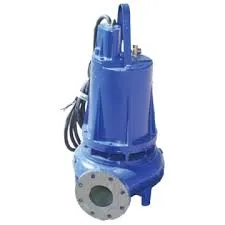Malay
- Afrikaans
- Albanian
- Amharic
- Arabic
- Armenian
- Azerbaijani
- Basque
- Belarusian
- Bengali
- Bosnian
- Bulgarian
- Catalan
- Cebuano
- Corsican
- Croatian
- Czech
- Danish
- Dutch
- English
- Esperanto
- Estonian
- Finnish
- French
- Frisian
- Galician
- Georgian
- German
- Greek
- Gujarati
- Haitian Creole
- hausa
- hawaiian
- Hebrew
- Hindi
- Miao
- Hungarian
- Icelandic
- igbo
- Indonesian
- irish
- Italian
- Japanese
- Javanese
- Kannada
- kazakh
- Khmer
- Rwandese
- Korean
- Kurdish
- Kyrgyz
- Lao
- Latin
- Latvian
- Lithuanian
- Luxembourgish
- Macedonian
- Malgashi
- Malay
- Malayalam
- Maltese
- Maori
- Marathi
- Mongolian
- Myanmar
- Nepali
- Norwegian
- Norwegian
- Occitan
- Pashto
- Persian
- Polish
- Portuguese
- Punjabi
- Romanian
- Russian
- Samoan
- Scottish Gaelic
- Serbian
- Sesotho
- Shona
- Sindhi
- Sinhala
- Slovak
- Slovenian
- Somali
- Spanish
- Sundanese
- Swahili
- Swedish
- Tagalog
- Tajik
- Tamil
- Tatar
- Telugu
- Thai
- Turkish
- Turkmen
- Ukrainian
- Urdu
- Uighur
- Uzbek
- Vietnamese
- Welsh
- Bantu
- Yiddish
- Yoruba
- Zulu
Telephone: +86 13120555503
Email: frank@cypump.com
Dis . 19, 2024 02:02 Back to list
'exploring the differences between axial flow and mixed flow ...'
Exploring the Differences Between Axial Flow and Mixed Flow Pumps
In the world of fluid mechanics, the choice of pump types is crucial for optimizing the efficiency of any system involving fluid transport. Among the various types of pumps available, axial flow and mixed flow pumps are frequently utilized. Understanding the differences between these two designs is essential for engineers and designers when selecting the appropriate pump for specific applications.
Axial Flow Pumps
Axial flow pumps, as the name implies, direct the fluid in an axial direction, meaning that the fluid flows parallel to the pump shaft. These pumps are characterized by their impellers, which have blades designed to push the fluid by converting rotational energy into fluid motion. The fluid enters the pump at the eye of the impeller and exits at the discharge in a linear flow pattern.
One of the primary advantages of axial flow pumps is their ability to handle large volumes of fluid with relatively low pressure. This makes them ideal for applications requiring high flow rates, such as in irrigation systems, flood control, and large-scale industrial processes. Moreover, axial flow pumps tend to be more efficient than other types of pumps at low head applications, thanks to their design that minimizes hydraulic losses.
However, axial flow pumps also have limitations. Their inability to generate high pressure means they are not suitable for applications where elevation change is significant, as they cannot lift fluids to high elevations. Additionally, they can be sensitive to changes in flow conditions, which may lead to issues such as cavitation if not properly designed or managed.
Mixed Flow Pumps
Mixed flow pumps incorporate features of both axial and radial pump designs, enabling them to move fluid both axially and radially. This dual action allows mixed flow pumps to achieve a balance between high flow rates and higher pressure generation. The impeller design is a critical aspect, with blades angled to facilitate both types of fluid movement.
The versatility of mixed flow pumps makes them suitable for a broader range of applications compared to axial flow pumps. They are commonly used in municipal water supply systems, wastewater treatment, and various industrial applications where both flow rate and pressure are important. Furthermore, they can function effectively across various head conditions, making them adaptable to numerous operational scenarios.
'exploring the differences between axial flow and mixed flow ...'

In terms of performance, mixed flow pumps provide moderate efficiency across a wider set of operating conditions. They can handle variations in flow better than purely axial flow pumps, which is vital in dynamic systems where demand might fluctuate significantly.
Key Differences
The choice between axial flow and mixed flow pumps involves several considerations
1. Flow Direction Axial flow pumps direct fluid along the axis of the pump, while mixed flow pumps facilitate both axial and radial flow.
2. Head vs. Flow Rate Axial flow pumps are optimized for high flow and low head, making them ideal for applications like irrigation. In contrast, mixed flow pumps can handle moderate head and flow situations, making them versatile for various uses.
3. Design Complexity Mixed flow pumps tend to be more complex due to their combined functionality, which can lead to more intricate maintenance needs. Conversely, axial flow pumps are simpler and easier to maintain but are limited in their application scope.
4. Efficiency While axial flow pumps can be more efficient in low-pressure scenarios, mixed flow pumps offer a balanced efficiency for a broader range of pressure conditions.
Conclusion
When deciding between axial flow and mixed flow pumps, it is critical to analyze the specific application requirements, including flow rate, head pressure, and operational conditions. Each pump type comes with its unique advantages and disadvantages, ultimately guiding engineers and designers in making the right choice for efficient fluid transport. By understanding the fundamental differences between these two types of pumps, industries can ensure optimal system performance tailored to their operational needs.
-
Heavy-Duty Mining Sludge Pumps - Wear-Resistant Slurry Handling
NewsAug.02,2025
-
Horizontal Split Case Pump with GPT-4 Turbo | High Efficiency
NewsAug.01,2025
-
ISG Series Pipeline Pump - Chi Yuan Pumps | High Efficiency, Durable Design
NewsAug.01,2025
-
Advanced Flue Gas Desulfurization Pump with GPT-4 Turbo | Durable & Efficient
NewsJul.31,2025
-
ISG Series Vertical Pipeline Pump - Chi Yuan Pumps | Advanced Hydraulic Design&Durable Construction
NewsJul.31,2025
-
ISG Series Vertical Pipeline Pump - Chi Yuan Pumps | Energy Efficient & Low Noise
NewsJul.31,2025










